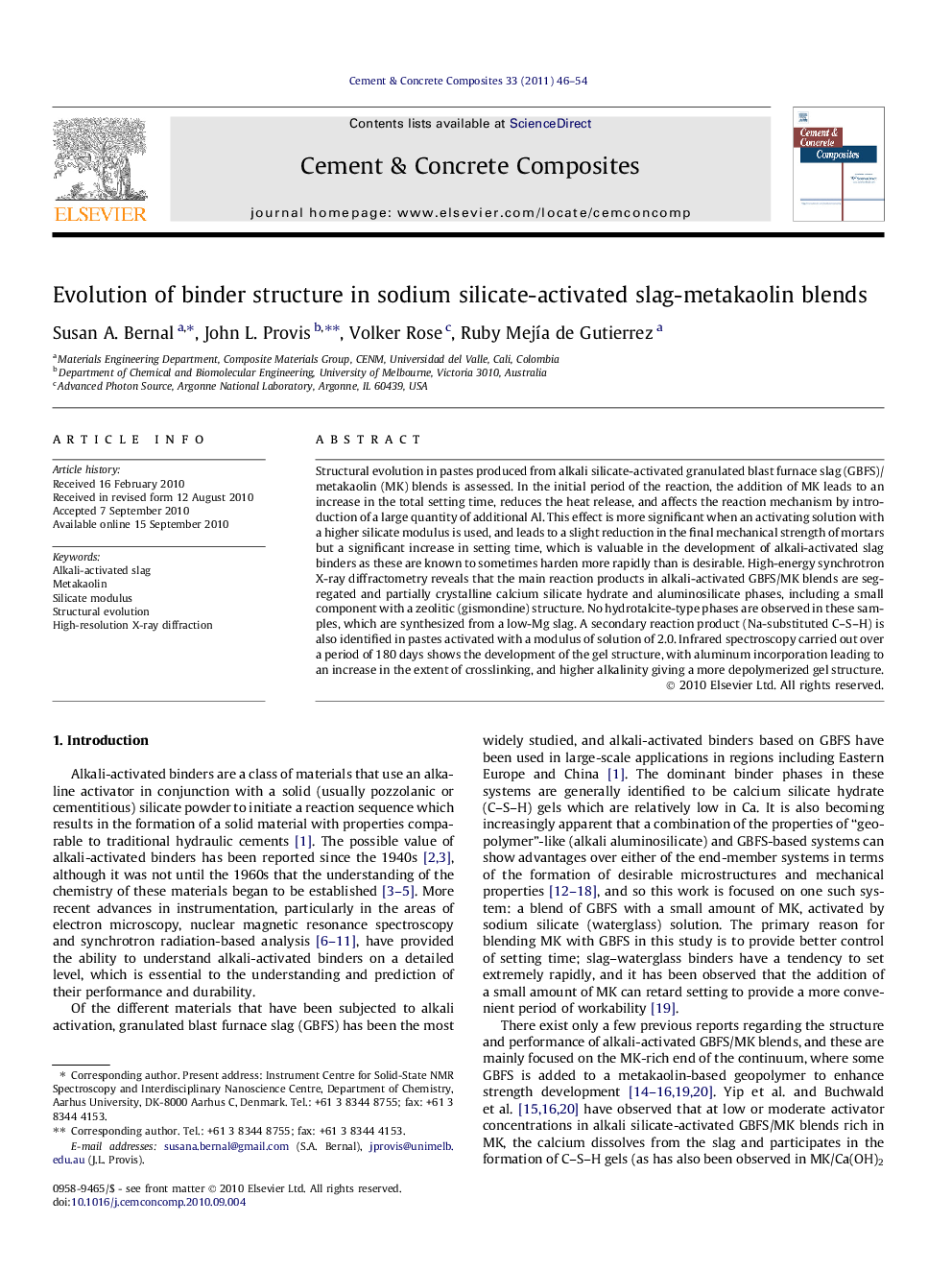| Article ID | Journal | Published Year | Pages | File Type |
|---|---|---|---|---|
| 1454951 | Cement and Concrete Composites | 2011 | 9 Pages |
Structural evolution in pastes produced from alkali silicate-activated granulated blast furnace slag (GBFS)/metakaolin (MK) blends is assessed. In the initial period of the reaction, the addition of MK leads to an increase in the total setting time, reduces the heat release, and affects the reaction mechanism by introduction of a large quantity of additional Al. This effect is more significant when an activating solution with a higher silicate modulus is used, and leads to a slight reduction in the final mechanical strength of mortars but a significant increase in setting time, which is valuable in the development of alkali-activated slag binders as these are known to sometimes harden more rapidly than is desirable. High-energy synchrotron X-ray diffractometry reveals that the main reaction products in alkali-activated GBFS/MK blends are segregated and partially crystalline calcium silicate hydrate and aluminosilicate phases, including a small component with a zeolitic (gismondine) structure. No hydrotalcite-type phases are observed in these samples, which are synthesized from a low-Mg slag. A secondary reaction product (Na-substituted C–S–H) is also identified in pastes activated with a modulus of solution of 2.0. Infrared spectroscopy carried out over a period of 180 days shows the development of the gel structure, with aluminum incorporation leading to an increase in the extent of crosslinking, and higher alkalinity giving a more depolymerized gel structure.
